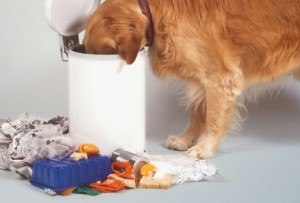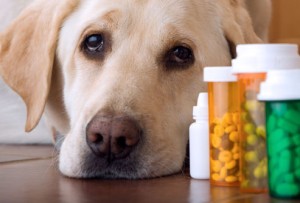Archive for April, 2014
Have A House In The Country? Have Pets? Beware of Ticks!

 Ticks present a unique problem for people who make their home in a wooded area. The issue is further compounded for pet owners. By their very nature, dogs are curious animals that seek to explore the territory around their home. In some cases this can mean picking up a few unwanted passengers. The best way to circumvent this problem is to invest in plenty of flea and tick spray.
Ticks present a unique problem for people who make their home in a wooded area. The issue is further compounded for pet owners. By their very nature, dogs are curious animals that seek to explore the territory around their home. In some cases this can mean picking up a few unwanted passengers. The best way to circumvent this problem is to invest in plenty of flea and tick spray.
In the event that you forget to take precautionary measures, it may become necessary to remove a wood tick from your dog’s skin. Although the process is never pleasant, it’s relatively straightforward. Begin my donning a pair of rubber gloves and taking out a pair of tweezers. Wrap the tweezers around the tick’s head and pull firmly in a straight-out motion. Do not make a twisting motion, or the tick’s head may remain lodged in the skin.
Remember, your pets count!
Listen to any of our six great radio stations on THE EDGEWATER INTERNET RADIO NETWORK!
Keep Your Cat Away From Any Lily’s
 There are many different kinds of Lily’s. This includes Easter Lily’s, day lily, Asiatic lily, tiger lily, peace lily, calla lily, and lily of the valley, among others. According to Ped Med MD, these flowers are beautiful to look at but could be deadly to your cat. They could die of kidney failure if they eat any part of these plants if they don’t receive medical treatment immediately! As little as two leaves can make your cat sick and if left untreated can become fatal within three days.
There are many different kinds of Lily’s. This includes Easter Lily’s, day lily, Asiatic lily, tiger lily, peace lily, calla lily, and lily of the valley, among others. According to Ped Med MD, these flowers are beautiful to look at but could be deadly to your cat. They could die of kidney failure if they eat any part of these plants if they don’t receive medical treatment immediately! As little as two leaves can make your cat sick and if left untreated can become fatal within three days.
Here are some signs to look for if you suspect that your cat may have ingested one of these plants.
- Drooling
- Vomiting pieces of the plant
- Loss of appetite
- Increased urination followed by a sudden lack of urination after one or two days.
- Dehydration
Be on the safe side, do not have any of these plants in your house!
Remember, your pets count!
Great popular standards can be heard on Starlite 365. It’s part of the Edgewater Internet Radio Network.
Positive Re-enforcement is Always Best for Your Dog!
 Positive reinforcement is the single most popular method for teaching dogs to obey human commands. Harsh punishment and intimidation are more than inhumane – they create a suspicious, fear-based relationship between owner and pet. On the other hand, rewarding a dog with a treat or a scratch on the back provides incentive for him to repeat that behavior in the future.
Positive reinforcement is the single most popular method for teaching dogs to obey human commands. Harsh punishment and intimidation are more than inhumane – they create a suspicious, fear-based relationship between owner and pet. On the other hand, rewarding a dog with a treat or a scratch on the back provides incentive for him to repeat that behavior in the future.
Bear in mind that most dogs are food-driven, and they will do whatever it takes to chomp on some dog treats. Once you’ve found the type of treat – whether it’s rawhide bones or a chewable bite – that appeals to your dog, use it as the go-to reward. Since dogs don’t have the same ability to associate actions with consequences well after the fact, you should reward good behavior immediately.
Remember, your pets count!
Listen to America’s Greatest Hits on Edgewater Radio!
Pets and Humans, A Great Mix!
 Erica Freeman, a professor at the University of Maryland School of nursing says that studies have shown that animals are good for our health. This is true whether we own our own pet or just spending some time with one. According to Dr. Freeman, pet owners have better health in general, fewer doctor visits, higher self esteem and tend to be more independent that non pet owners. She says that dogs can also motive people to exercise. People who won’t take a walk by themselves would be more motivated if they knew that they had to get up to walk their dog. People who walk with a dog walk longer and faster then people who walk alone. You don’t have a pet yet? I would think about adopting one! They offer more than just good health. They offer unconditional love that is very difficult to find these days.
Erica Freeman, a professor at the University of Maryland School of nursing says that studies have shown that animals are good for our health. This is true whether we own our own pet or just spending some time with one. According to Dr. Freeman, pet owners have better health in general, fewer doctor visits, higher self esteem and tend to be more independent that non pet owners. She says that dogs can also motive people to exercise. People who won’t take a walk by themselves would be more motivated if they knew that they had to get up to walk their dog. People who walk with a dog walk longer and faster then people who walk alone. You don’t have a pet yet? I would think about adopting one! They offer more than just good health. They offer unconditional love that is very difficult to find these days.
Remember, your pets count!
How about some great all hit country music? You’ll find it on THE EDGEWATER INTERNET RADIO NETWORK!
Are Car Dog Seat Harnesses Safe?
 We will do anything to keep our pets safe, especially while traveling in a car. Good Morning America reported that not all car dog seat safety harnesses are safe. The Center For Pet Safety along with Subaru of America has been conducting tests on the safety of dog seat harnesses. They tested seven popular dog harnesses using a specially designed weighted test dog. Simulating a collision at 60 mph, it found that only two brands provided adequate protection. Many of the harnesses resulted in catastrophic failure. So should you use a dog seat harness? Even though much improvement is needed to ensure that these products provide adequate protection for our pets, The Center for Pet Safety says that you should still use one. Remember, the pet harness is better than no protection at all.
We will do anything to keep our pets safe, especially while traveling in a car. Good Morning America reported that not all car dog seat safety harnesses are safe. The Center For Pet Safety along with Subaru of America has been conducting tests on the safety of dog seat harnesses. They tested seven popular dog harnesses using a specially designed weighted test dog. Simulating a collision at 60 mph, it found that only two brands provided adequate protection. Many of the harnesses resulted in catastrophic failure. So should you use a dog seat harness? Even though much improvement is needed to ensure that these products provide adequate protection for our pets, The Center for Pet Safety says that you should still use one. Remember, the pet harness is better than no protection at all.
Remember, your pets count!
Listen to six great internet radio stations —-great music plays on THE EDGEWATER INTERNET RADIO NETWORK!
The Pomeranian – One of The Most Popular Dog Breeds
 Pomeranians are small dogs standing 5 to 11 inches tall. They are typically a very friendly, lively dog breed. If you love a dog that follow you all around, then you’ll love a Pomeranian. They are very protective of their owners. These dogs are very alert and very aware of any changes in their environment. They bark at new stimuli and this could develop into a habit of barking excessively in any situation. They are very intelligent and respond very well to training but they usually manage to get what they want from their owners. They are extroverted and they enjoy being the center of attention but be careful, they can become aggressive if they are not well trained.
Pomeranians are small dogs standing 5 to 11 inches tall. They are typically a very friendly, lively dog breed. If you love a dog that follow you all around, then you’ll love a Pomeranian. They are very protective of their owners. These dogs are very alert and very aware of any changes in their environment. They bark at new stimuli and this could develop into a habit of barking excessively in any situation. They are very intelligent and respond very well to training but they usually manage to get what they want from their owners. They are extroverted and they enjoy being the center of attention but be careful, they can become aggressive if they are not well trained.
Their life expectancy is between 12 and 15 years. If you keep him on a good diet and give him plenty of exercise, he should have few health problems. They are prone to early tooth loss and feeding them dry food is recommended. Poms also have the smallest litter size averaging from 1.9 to 2.7 puppies per litter. They are a very popular dog breed and and usually in the top twenty of registered AKC dog breeds over the past ten years.
Remember, your pets count!
Six great radio stations can be heard on THE EDGEWATER INTERNET RADIO NETWORK.
Can Cats Get HIV?
 HIV in cats is called feline immunodeficiency virus (FIV).This is the same virus family as the feline leukemia virus. FIV infected cats are found worldwide. In the United States, approximately 1.5 to 3 percent of healthy cats are infected with FIV. Rates rise significantly-15 percent or more-in cats that are sick or at high risk of infection. Because biting is the most efficient means of viral transmission, free-roaming, aggressive male cats are the most frequently infected, while cats housed exclusively indoors are much less likely to be infected according to the Cornell Feline Health Center. The primary way to get the infection is through bite wounds. House cats that are well cared for and that do not fight with other cats are very unlikely to contact FIV.
HIV in cats is called feline immunodeficiency virus (FIV).This is the same virus family as the feline leukemia virus. FIV infected cats are found worldwide. In the United States, approximately 1.5 to 3 percent of healthy cats are infected with FIV. Rates rise significantly-15 percent or more-in cats that are sick or at high risk of infection. Because biting is the most efficient means of viral transmission, free-roaming, aggressive male cats are the most frequently infected, while cats housed exclusively indoors are much less likely to be infected according to the Cornell Feline Health Center. The primary way to get the infection is through bite wounds. House cats that are well cared for and that do not fight with other cats are very unlikely to contact FIV.
FIV infected cats may appear normal for many years. Information for the Cornell Feline Health Center reveals that infection eventually leads to a state of immune deficiency that hinders the cat’s ability to protect itself against other infections. The same bacteria, viruses, protozoa, and fungi that may be found in the everyday environment–where they usually do not affect healthy animals–can cause severe illness in those with weakened immune systems. These secondary infections are responsible for many of the diseases associated with FIV.
If a cat is infected, his health may deteriorate slowly. There may be current illness interspersed with periods of fair to good health. Like HIV, FIV may not appear for years after infection. The immune system deteriorates and signs can appear anywhere throughout the body.
Remember, your pets count!
Listen to great music on the following internet radio stations.
EDGEWATER RADIO – The greatest hits of te 50’s 60’s 70’s and 80’s/
CONSTANT COUNTRY KRS – Todays hottest country, yesterdays favorites and new releases.
MOVIN EASY NET RADIO – Perfect at work! Soft Rock from the 60’s 70’s and 80’s
DANCE FEVER 54 Great dance and disco classics all the time!
STARLITE 365 Pop standards and vocals all the time. Timeless classics!
LINDBERGH RADIO Rock and alternative “THE ROCK”
Keep Your Dog Away from Garbage
 Does your dog always go for the dumpster when he sees one? Dogs that eat trash are living dangerously! Not only are bone parts and other pieces of garbage hazardous to your dog’s digestive system but moist food can become toxic quickly. Did you know that disgarded food scraps grow fungus in a couple of days? This poses a great risk to your dog. Moldy cheese product like old pizza are exceptionally dangerous because they contain toxins that can give your dog muscle tremors and seizures. Keep you dog on his dog leash and away from the trash while walking him. If he does manage to get into the garbage, watch him very closely. If he has a loss of appetite, shivering or yellow eyes or lips, there’s a major problem. Make sure that you call your vet immediately.
Does your dog always go for the dumpster when he sees one? Dogs that eat trash are living dangerously! Not only are bone parts and other pieces of garbage hazardous to your dog’s digestive system but moist food can become toxic quickly. Did you know that disgarded food scraps grow fungus in a couple of days? This poses a great risk to your dog. Moldy cheese product like old pizza are exceptionally dangerous because they contain toxins that can give your dog muscle tremors and seizures. Keep you dog on his dog leash and away from the trash while walking him. If he does manage to get into the garbage, watch him very closely. If he has a loss of appetite, shivering or yellow eyes or lips, there’s a major problem. Make sure that you call your vet immediately.
Remember, Your Pets Count!
Great music on the EDGEWATER INTERNET RADIO NETWORK!
Pets Helping Pets
 You’ve just left on a trip and your dog is in the back of his dog carrier. You stop in a parking lot and open the back hatch where your dog is. He gets out of his carrier, jumps out of the car and gets hit by another car as he’s running across the street. You call your the nearest animal hospital who dispatches help immediately. Your dog is injuried but is awake and seems to be alert. He is bleeding from his leg. At the animal hosiptal your vet says that your dog will be OK but he needs blood. Where does the new blood come from? Beth Davidow of the Animal Critical Care and Blood Bank in Seattle says that most of it comes from healthy pets whose owners get them involved as community blood donors. She says that many pet owners are committed to making sure that another animal in need has blood if they need it. To become a donor, a dog must be free of diseases, not on any medication and is willing to lie still for treats while it’s blood is drawn. Cats can donate to, but must be anestitized. If you want your vet to extend a helping paw to another animal in need, you can ask your vet to help you find a program in your area.
You’ve just left on a trip and your dog is in the back of his dog carrier. You stop in a parking lot and open the back hatch where your dog is. He gets out of his carrier, jumps out of the car and gets hit by another car as he’s running across the street. You call your the nearest animal hospital who dispatches help immediately. Your dog is injuried but is awake and seems to be alert. He is bleeding from his leg. At the animal hosiptal your vet says that your dog will be OK but he needs blood. Where does the new blood come from? Beth Davidow of the Animal Critical Care and Blood Bank in Seattle says that most of it comes from healthy pets whose owners get them involved as community blood donors. She says that many pet owners are committed to making sure that another animal in need has blood if they need it. To become a donor, a dog must be free of diseases, not on any medication and is willing to lie still for treats while it’s blood is drawn. Cats can donate to, but must be anestitized. If you want your vet to extend a helping paw to another animal in need, you can ask your vet to help you find a program in your area.
Remember, your pets count!
There are six great radio stations on The Edgewater Internet Radio Network. Click…listen…enjoy! Happy weekend!
Dangerous Condition for Dogs
Pleural Effusion is a condition where fluid or pus accumulates in an animals chest cavity compressing the lungs and heart. Leah Cohn, Professor of Veterinary Internal Medicine at the University of Missouri says that animals with pleural effusion have to breathe very rapidly because they can’t expand their lungs. They take short, shallow, rapid breaths. She says the pleural effusion has many potential causes such as infection and congestive heart failure. Treatment will vary. If a pet is struggling to breath, most veterinarians will remove the fluid with a needle and syringe. This is a process that may need to be repeated until the underlying cause of the fluid buildup can be cured. In this case pet medication alone will not cure this kind of problem. If you notice your pet breathing very rapidly, take him to your vet right away.
Remember, your pets count!
Great music on the internet…THE EDGEWATER INTERNET RADIO NETWORK!